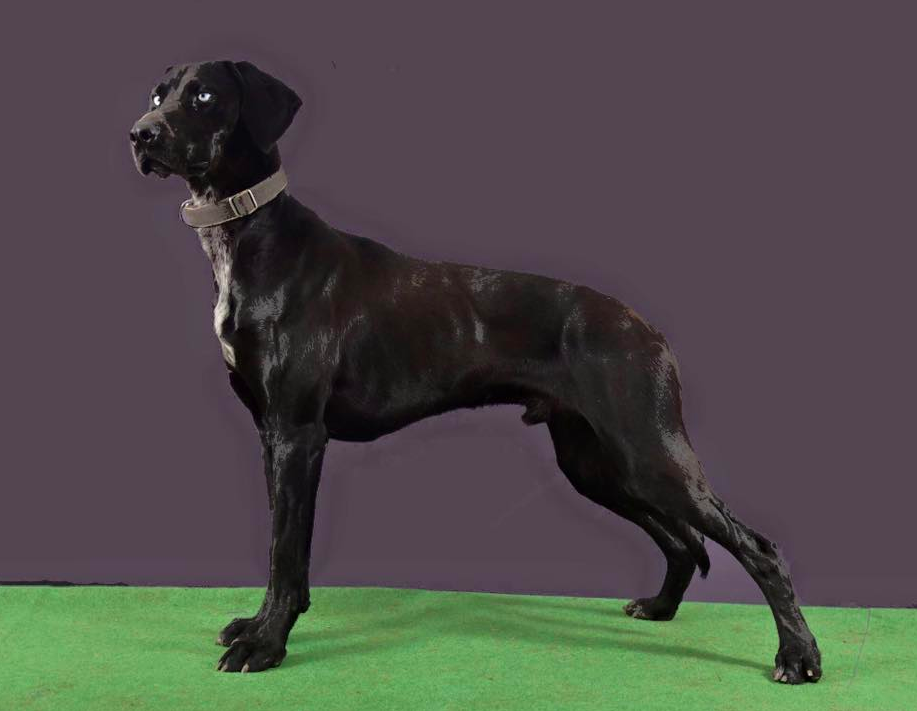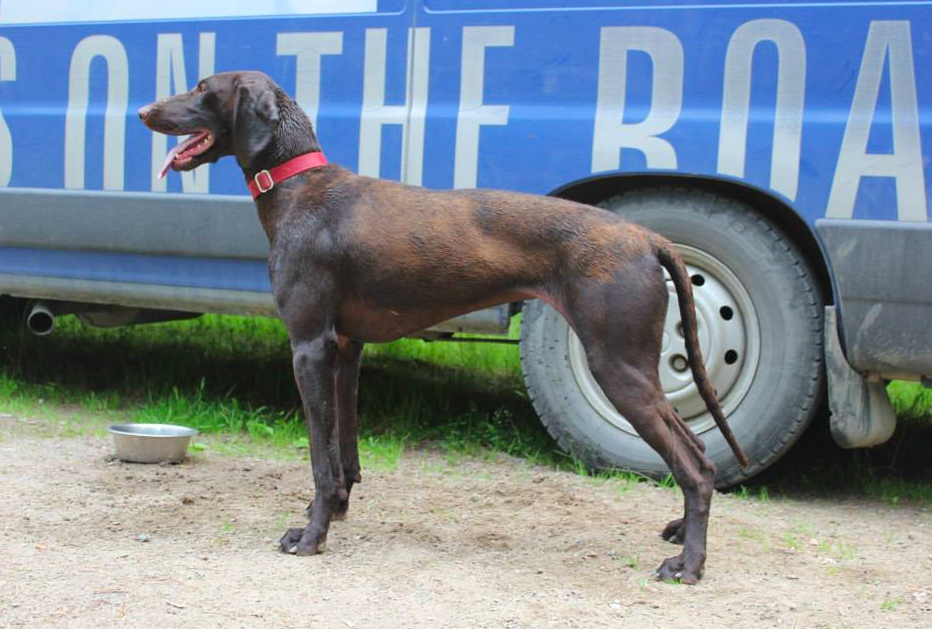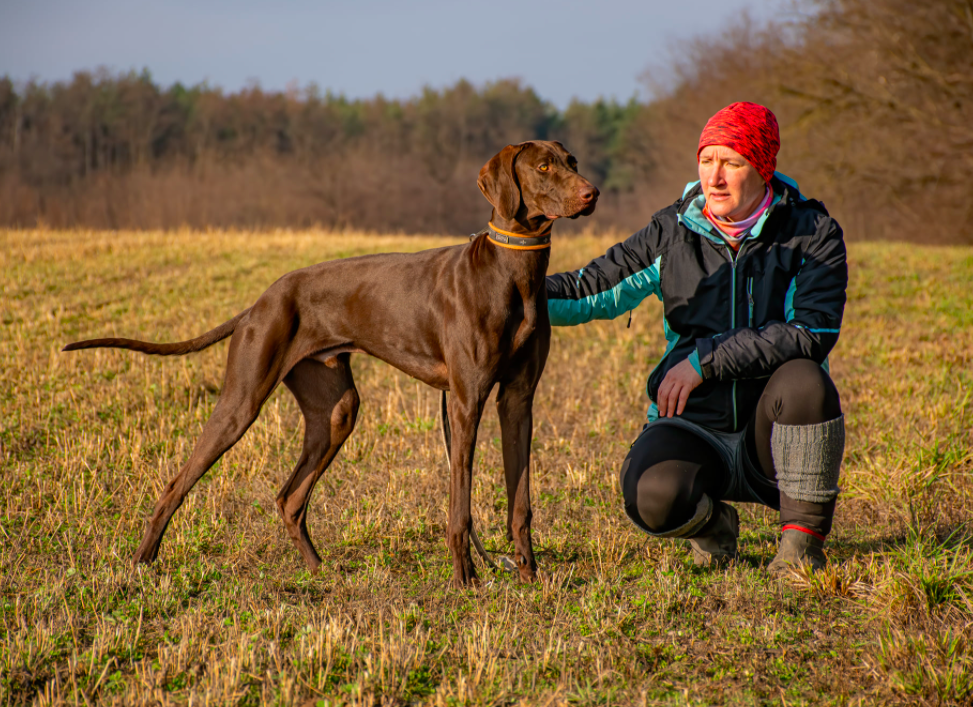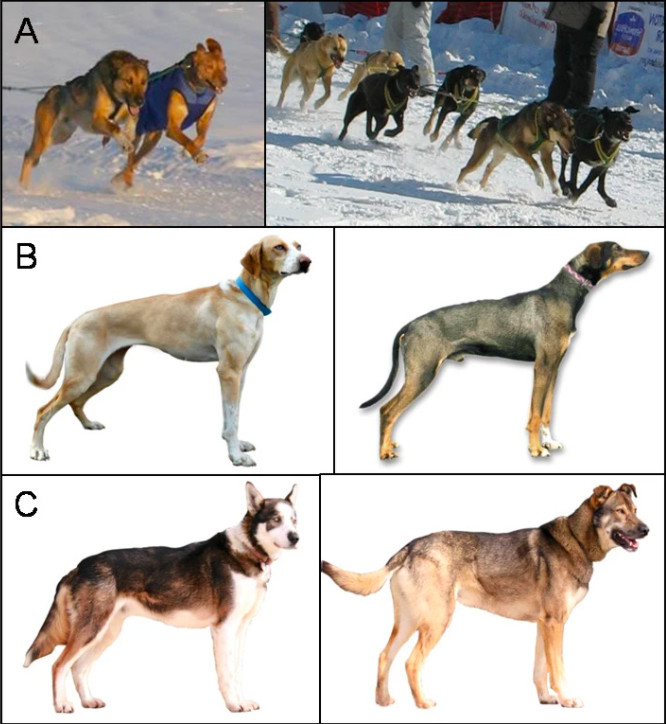SLED DOG TYPES
The labels used to describe these purpose bred crosses are to help identify the types of breeds, percentages, or physical traits they express. They will never be developed into a purebred registry because they would lose their athletic vigour, and breeding choices would be need to be selected largely on phenotype (looks) rather than performance.
In Australia, it’s easier to differentiate the breed types because we don’t see or have many. Hopefully this breakdown makes it simpler to understand what people mean when they say they own a certain type of sled dog.
eurohounds
Scandanavian Hounds, European Sled Dogs (ESD), Evropsky Sanovy Pes (ESP), Eurohusky, Alaskan Hounds
This breed mix describes the crossing of Alaskan Husky with Hounds and or Pointing breed types. They are arguably the most versatile and popular cross, successful with limited sprint, sprint, and mid distance races. They have no set appearance and can vary greatly in looks depending on the percentage of breeds making them up. The first Australian Eurohound litter was bred by Speedback Kennels in 2008, and again with imported Eurohound semen in 2011.
greysters
Greyhound + Korthårig vorsteh (Norwegian for German Shorthaired Pointer)
By crossing a Greyhound with a German Shorthaired Pointer (or English Pointer), a high drive limited sprint sleddog is born. This style of dog has been used for around 40 years, originating with the likes of Lena Boysen Hillestad and others from Europe. There are no pure Greysters in Australia at this stage, only in the form of stored semen. They excel best at dryland and snow in sprint distances up to about 10km.
alaskan huskies
With the advent of sled dog sport at the beginning of the 20th century, Alaska began to cross the native dogs (“Indian dogs”, rather wolf-like) with polar dogs like the Siberian Huskies in order to get the optimal sled dog for the races. In the course of time hunting dogs and greyhounds were added to the breeding. They are now a distinct landrace breed with a unique genome sequence identifiable with Embark genetic testing. The first Australian Alaskan Huskies were bred in the 1990’s, but today there are little to no kennels remaining who breed for this type of dog here.
European sled dogs
(ESD), also known in Czech as Evropský Saňový Pes (ESP)
This terminology originates from the Czech Republic, Poland, and Slovakia region. They are the same breeds as Eurohounds but the Alaskan Husky (AH) % is usually very small. The term ESD, ESP, and Greyster are often used on the same type of dog, as they begin to label these mixes on phenotype looks and behaviour – even if there is still a small percentage of AH on paper. Every dog is used mainly for mono sled dog sports or small teams.
FURTHER READING...
Alaskan sled dogs are a mixed breed dog selected strictly for their racing performance.
A) Top row: Sprint racing teams of “traditional” Alaskan sled dogs (no purebred crossings in the last 5 generations) and Pointer crossed Alaskan sled dogs. Spandex dog coats (in blue) are commonly used on shorter-haired Pointer × Alaskan sled dogs when temperatures are ≤10’F.
B) Middle row: Sprint sled dogs of 25% or greater Pointer ancestry according to their written pedigree records.
C) Bottom row: “Traditional” Alaskan sled dogs from distance racing teams. All photos were taken between 2006-2009 of dogs competitively racing in high performance kennels.





